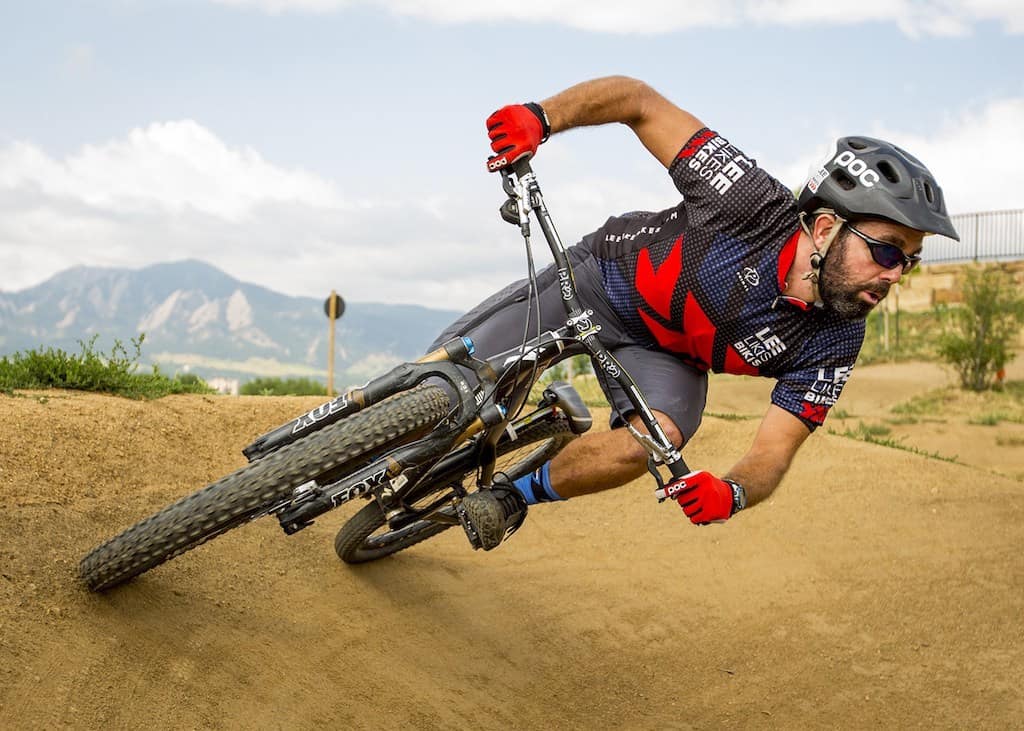If you’re an avid mountain biker, mastering the art of cornering is essential for improving your speed and control on the trails. So, how to corner on a mountain bike?
In this article, we’ll guide you through the basics of cornering, including body position, braking technique, and line selection. We’ll also cover how to approach and execute corners effectively, common mistakes to avoid, and tips for practicing and improving your cornering skills.
Understanding the basics of cornering
Body position
When it comes to cornering on a mountain bike, your body position plays a crucial role in maintaining balance and control. Here’s how to position yourself:
– Keep your knees and elbows slightly bent to absorb any bumps or obstacles.
– Shift your weight towards the outside pedal, which will help you maintain traction and stability.
– Lean your body slightly towards the inside of the corner, while keeping your head up and looking ahead.
Braking technique
Proper braking technique is essential for maintaining control while cornering. Here are some tips:
– Before entering the corner, release the brakes and let off some speed.
– As you approach the corner, apply gentle and controlled braking to maintain a consistent speed.
– Avoid braking hard while in the middle of the corner, as this can cause your tires to lose traction.
Line selection
Choosing the right line through a corner can make a significant difference in your overall speed and control. Consider the following:
– Look for the smoothest and widest line possible, as this will provide better traction and stability.
– Avoid taking an inside line that may have loose gravel or obstacles.
– Take note of the trail conditions and adjust your line accordingly.
Approaching the corner
Adjusting speed
Before entering a corner, it’s crucial to adjust your speed appropriately. Here’s how:
– Slow down before the corner by releasing the brakes and using your body position to control your speed.
– Gauge the sharpness of the corner and adjust your speed accordingly.
– Remember, it’s better to enter a corner slightly slower than too fast, as you can always accelerate out of it.
Scanning the trail
As you approach a corner, it’s essential to scan the trail ahead to anticipate any obstacles or changes in terrain. Follow these steps:
– Look ahead and identify the best line through the corner.
– Take note of any loose rocks, roots, or other potential hazards.
– Keep your eyes focused on where you want to go, rather than fixating on obstacles.
Executing the corner
Leaning the bike
Leaning your bike into the corner is a fundamental technique for maintaining traction and control. Here’s how to do it:
– Shift your body weight towards the inside of the corner while keeping your bike upright.
– Lean the bike by pushing the handlebars in the direction of the turn.
– Maintain a balanced position and avoid excessive leaning, as this can cause loss of control.
Weight distribution
Proper weight distribution is crucial for maintaining traction and stability through a corner. Consider the following:
– Shift your body weight towards the outside pedal to increase traction on that side.
– Keep your upper body relaxed and centered over the bike.
– Avoid leaning too far forward or backward, as this can affect your balance.
Using your brakes
While it’s generally best to avoid heavy braking in the middle of a corner, there are situations where using your brakes can be beneficial. Here’s when and how to use them:
– If you find yourself entering a corner too fast, apply gentle and controlled braking to reduce your speed.
– Use your brakes before entering the corner, rather than during the turn itself.
– Be cautious not to lock up your wheels, as this can cause loss of control.
Common mistakes to avoid
Over-braking
One common mistake is braking too much or too late, which can cause your tires to lose traction. Avoid this by releasing the brakes before entering the corner and applying gentle and controlled braking as needed.
Not looking ahead
Failing to look ahead and scan the trail can lead to poor line selection and decreased reaction time. Always keep your eyes focused on where you want to go, allowing you to anticipate and navigate the corner more effectively.
Leaning too much
While leaning your bike is essential, leaning too much can result in loss of control. Maintain a balanced position and avoid excessive leaning, especially on loose or slippery surfaces.
Practicing cornering skills
Find a suitable trail
To practice your cornering skills, find a trail with a variety of corners that suit your skill level. Look for trails with a mix of tight and wide corners, as well as different types of terrain.
Start with easy corners
Begin by practicing on easy corners to build your confidence and technique. Focus on maintaining proper body position, weight distribution, and line selection.
Gradually increase difficulty
As you become more comfortable, gradually increase the difficulty of the corners you tackle. Challenge yourself with tighter corners, steeper terrain, or faster speeds to further refine your skills.
Tips for improving cornering technique
– Practice regularly to build muscle memory and improve your overall technique.
– Experiment with different line choices to find what works best for you.
– Seek feedback from more experienced riders or consider taking a skills clinic to further enhance your cornering skills.
Conclusion
Mastering the art of cornering on a mountain bike is essential for improving your speed, control, and overall enjoyment on the trails. By understanding the basics of body position, braking technique, and line selection, and by practicing regularly, you’ll be well on your way to becoming a more confident and skilled mountain biker. So get out there, find some corners, and start honing your cornering skills today!
Originally posted 2023-07-31 10:30:29.


